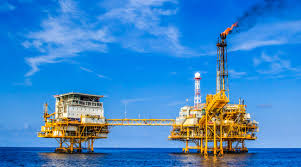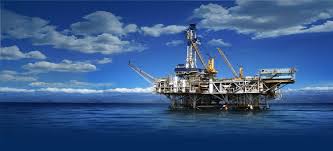Oil and gas offshore platforms have played a crucial role in the extraction and production of petroleum and natural gas. As technology advances and the industry evolves, it becomes increasingly geotechnical testing solutions important to explore the future of these platforms. In this article, we will delve into the advancements and potential developments in offshore platforms for oil and gas extraction, analyzing the impact of technology, environmental considerations, and emerging trends in the industry.
Exploring the Future of Oil and Gas Offshore Platforms involves considering new technologies and innovations to improve safety, efficiency, and environmental sustainability. This may include the use peinsofz for petrological solutions of autonomous robots for maintenance and repair, advanced monitoring systems for real-time data analysis, and renewable energy integration to reduce reliance on fossil fuels. Additionally, the development of next-generation materials and construction techniques can enhance the resilience and longevity of offshore platforms, ultimately shaping the future of the oil and gas industry.
The Impact of Oil and Gas Offshore Platforms on Marine Life

Oil and gas offshore platforms can have significant impacts on marine life. The construction and operation of these platforms can result in habitat loss, increased noise levels, and the release of pollutants into the surrounding waters. This can disrupt marine ecosystems and negatively affect the plants and animals that depend on these habitats. Additionally, oil spills and other accidents can have devastating effects on marine life, causing widespread harm to fish, marine mammals, and other species. These impacts highlight the need for careful planning and regulation to minimize the environmental offshore services consequences of offshore oil and gas development. Moreover, ongoing research and monitoring efforts are crucial to better understand and mitigate the impacts of these platforms on marine life.
Offshore Platform Design and Construction for Oil and Gas Extraction
consulting firms for oil and gas

Offshore platform design and construction for oil and gas extraction involves the engineering and construction of structures that are used to extract and process oil and gas from offshore fields. The design and construction process typically involves various engineering disciplines such as structural, electrical, mechanical, and civil engineering. Once the design is finalized, the construction phase begins, which involves the fabrication and assembly of the platform components. This can include the construction of the substructure, such as the jacket or floating production system, as well as the topside facilities, which house the processing equipment and living quarters for the crew. The construction process also involves the installation of pipelines, risers, and other infrastructure necessary for the extraction and transportation of oil and gas to onshore facilities. Safety and environmental considerations are paramount throughout the design and construction process to ensure the integrity and resilience of the offshore platform. Overall, offshore platform design and construction for oil and gas extraction is a complex and highly specialized field that requires expertise in multiple disciplines to ensure the success and safety of the project.
Advancements in Safety Technology for Oil and Gas Offshore Platforms
Advancements in safety technology for oil and gas offshore platforms have included the development of advanced monitoring systems to detect and prevent potential hazards. These systems often utilize sensors, drones, and other technologies to continuously monitor for gas leaks, equipment malfunctions, and other safety risks. Additionally, there have been advancements in escape and rescue technology, such as the implementation of advanced lifeboats and evacuation systems to ensure the safe evacuation of personnel in the event of an emergency. Furthermore, the use of virtual reality training programs and simulators has become more widespread, allowing workers to prepare for emergency situations in a safe and controlled environment. Overall, these advancements in safety technology are aimed at reducing the risk of accidents and ensuring the well-being of workers on offshore platforms.
The Environmental and Economic Benefits of Decommissioning Offshore Platforms
Decommissioning offshore platforms can provide numerous environmental and economic benefits. From an environmental perspective, removing offshore platforms can help restore marine ecosystems and reduce the potential for oil spills and other environmental hazards. Decommissioning can also create new opportunities for marine life to flourish and for the natural processes that support healthy oceans to thrive. From an economic standpoint, the decommissioning process can create jobs and stimulate economic activity in the surrounding area. Additionally, repurposing offshore platforms for alternative uses, such as artificial reefs or renewable energy installations, can provide long-term economic benefits for local communities. Overall, the environmental and economic benefits of decommissioning offshore platforms make it an important consideration for managing and maintaining sustainable practices in the offshore energy industry.
Challenges and Opportunities in Offshore Platform Maintenance and Inspection
Challenges in offshore platform maintenance and inspection include difficult weather conditions, limited access to resources and equipment, and the urgency to carry out maintenance without disrupting ongoing operations. Opportunities in this field include the development of advanced technologies such as robotics and drones for inspection, as well as the potential for predictive maintenance using data analytics and sensor technology. Additionally, there is an opportunity for cost savings and improved safety by implementing more efficient maintenance and inspection processes.